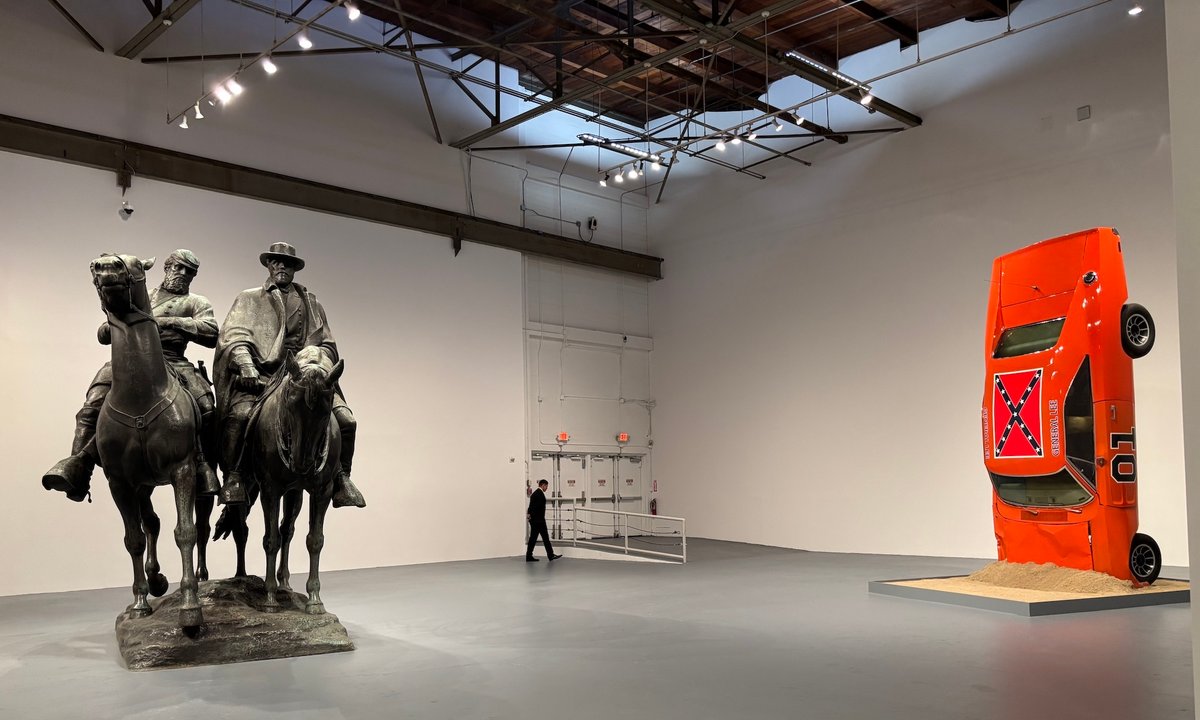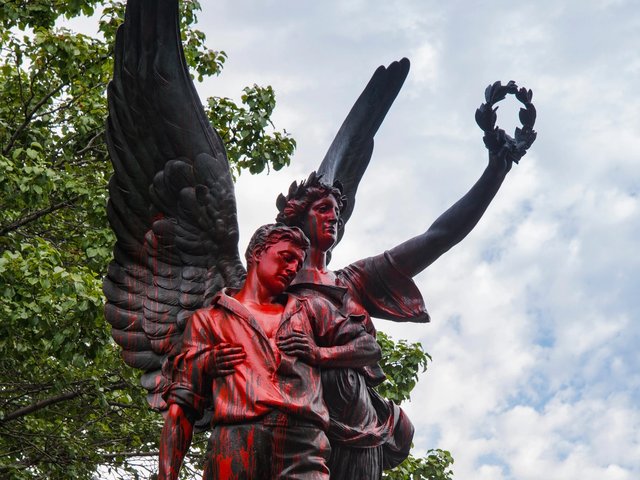The long-awaited exhibition Monuments, which opens this week in Los Angeles at the Museum of Contemporary Art (Moca) and the Brick, proves heavy in more than one way. It confronts themes of white supremacy and Black subjugation in America by creating dialogues between contemporary art and Confederate monuments that were dethroned and decommissioned during the racial reckonings of recent years. And the monuments themselves, though now in a museum setting instead of a park or public square, still have an unnegotiable, unmovable sort of heft.
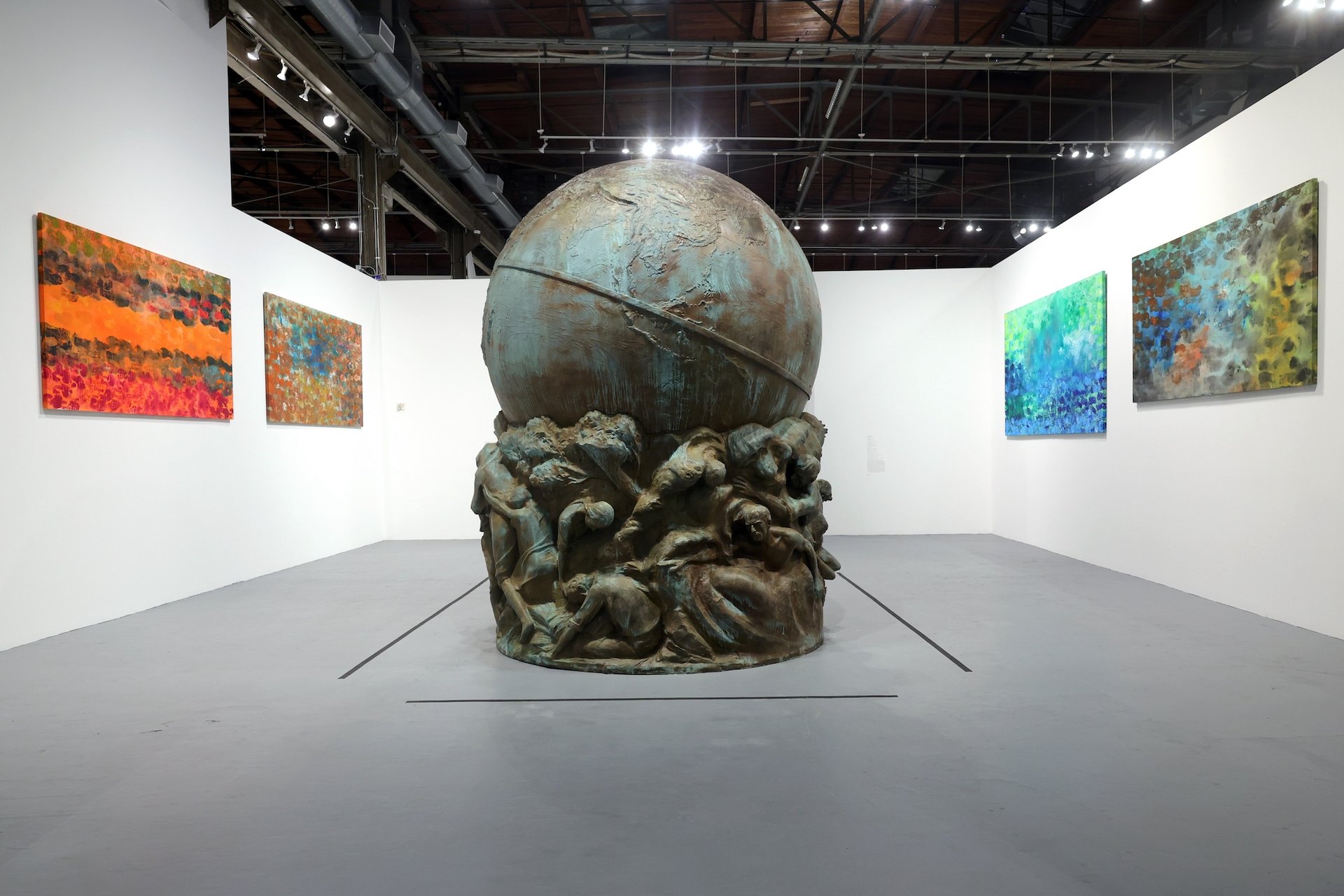
Installation view of Monuments at the Geffen Contemporary at the Museum of Contemporary Art in Los Angeles Courtesy of the Museum of Contemporary Art (Moca). Photo by Stefanie Keenan for Getty Images
Even after being knocked off their granite pedestals in Maryland or Virginia, these monuments stand as high as 16ft and weigh in at as much as 15,000lbs, testing the capacity of any museum to transport and accommodate them. At various openings and previews last week, the show’s three curators—the Brick’s director Hamza Walker, Moca curator Bennett Simpson and the artist Kara Walker—repeatedly thanked their hard-working team of preparators. One of the most unwieldy sculptures, a double monument featuring Confederate generals Robert E. Lee and Stonewall Jackson on loan from the city of Baltimore, required road closures during transport and a careful choreography of two Versa-lifts to position it into place.
Fitting the monumental statuary in the galleries was also an issue. Moca’s Geffen Contemporary location, which was previously a police car warehouse, looks like it was made for this work, with ceilings as high as 35ft. But the main exhibition space of the Brick is only 14ft tall, and Kara Walker’s contribution to the show—her radical reconfiguring of an actual Confederate monument of war-hungry Jackson on horseback (placing the horse’s neck and bridle on top of the beheaded creature)—appears to scrape the ceiling. Three slices she took from the statue’s enormous granite base, exhibited nearby, weigh between 5,000lbs and 12,000lbs each.
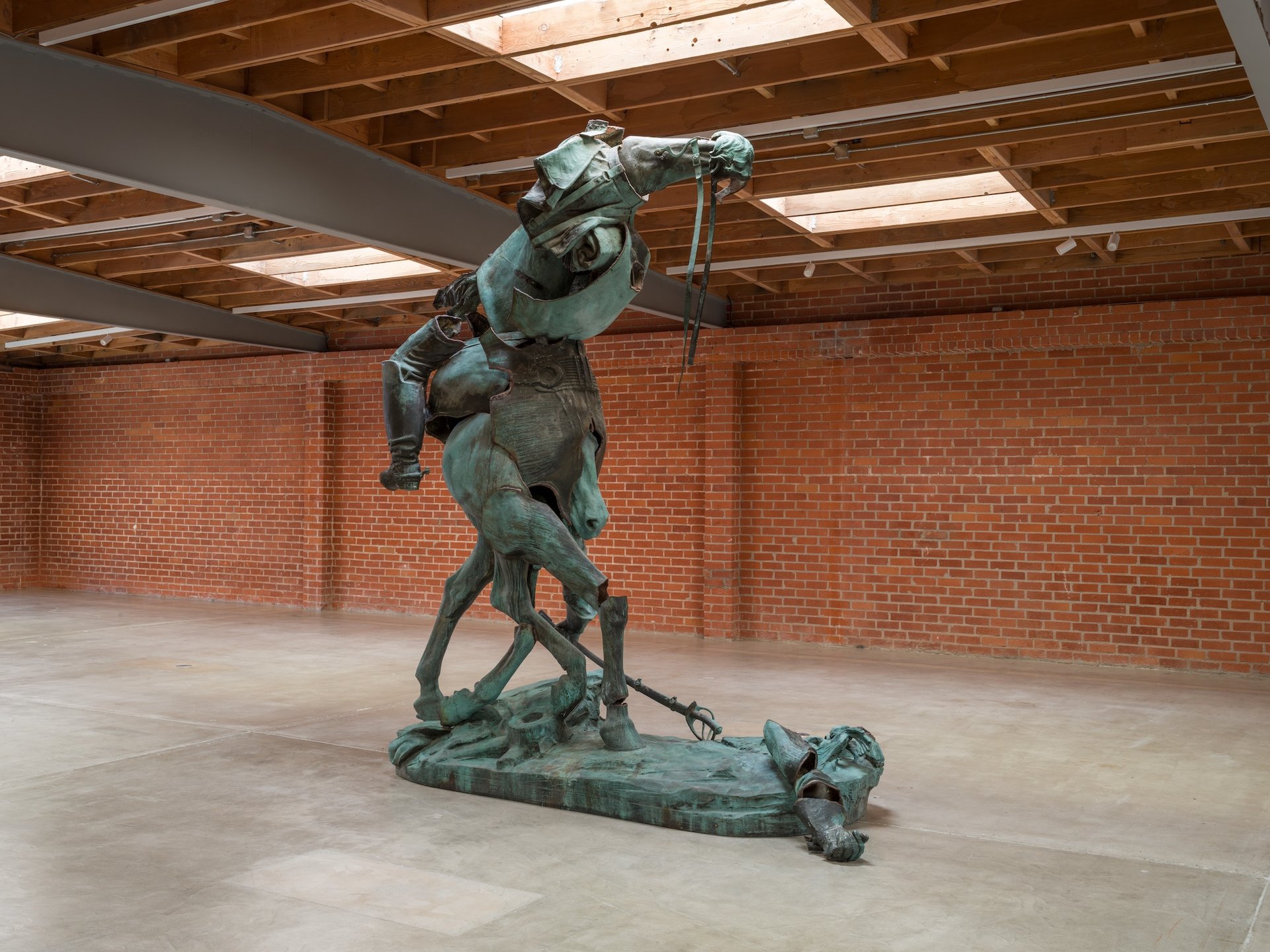
Installation view of Monuments at the Brick featuring Kara Walker's Unmanned Drone (2023) Photo by Ruben Diaz. Courtesy the artist and Sikkema Malloy Jenkins
“Those things were never made to be moved,” Hamza Walker says. “It’s not like a work of contemporary art, where everyone’s thinking: how big are the doors for that to go through?” To his point, Hank Willis Thomas’s replica of a 1969 orange Dodge Charger—an upended version of the General Lee car from the series The Dukes of Hazzard (in essence upending the adventures of the “good ole boys”)—was engineered by a Hollywood prop shop in 2019 to be moved and has been exhibited widely since. And Karon Davis’s new sculpture, Descendant (2025), is lighter than it looks, even though it shows a larger-than-life version of her son holding a tiny Confederate sculpture by the horse’s tail, as if it were a rat’s tail, flipping the script that monumentalises white bodies.
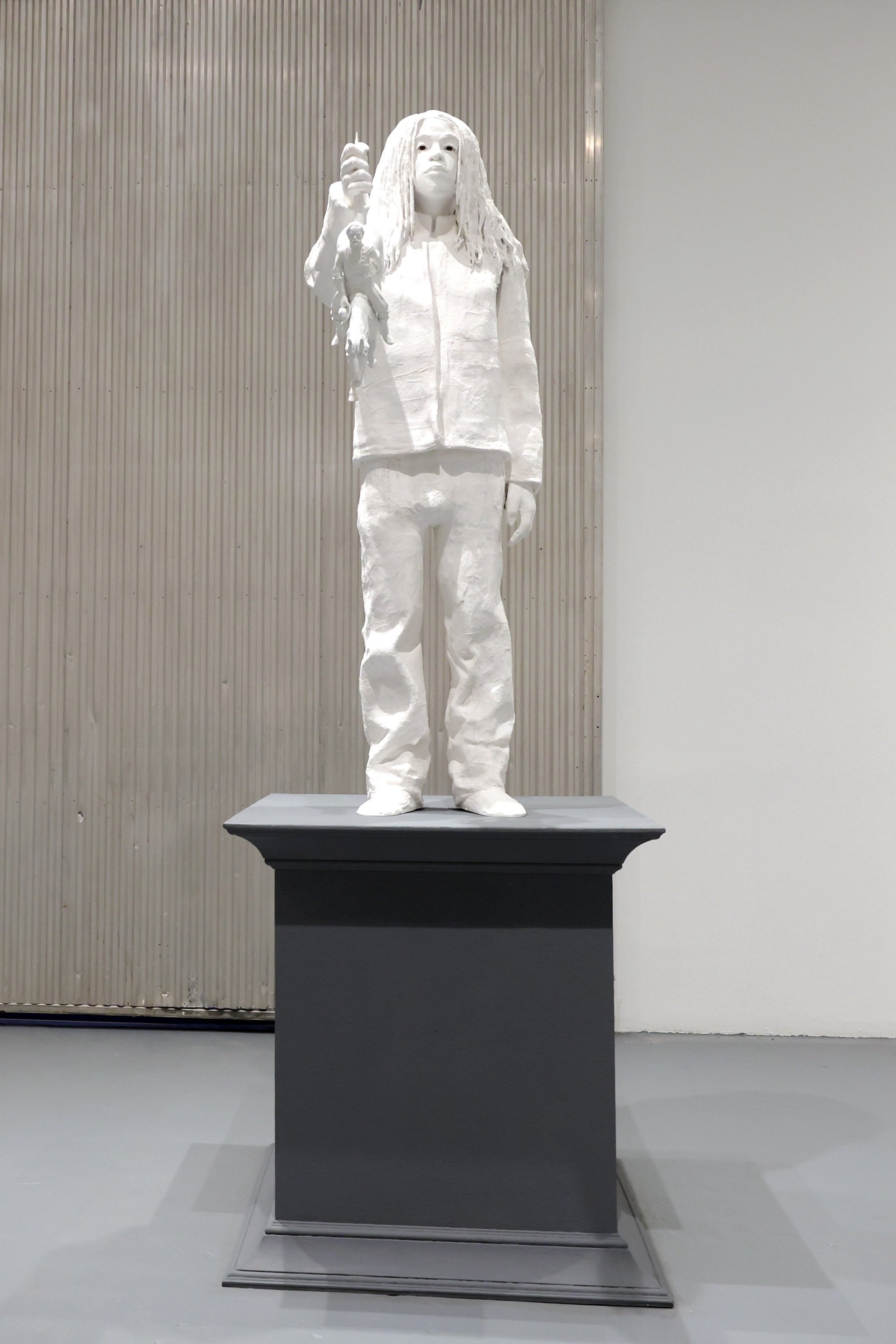
Installation view of Monuments featuring Karon Davis's Descendant (2025) Courtesy of the Museum of Contemporary Art (Moca). Photo by Stefanie Keenan for Getty Images
Ann Goldstein, Moca’s interim director, says the installation process for this show reminded her of the time in 1998 they had to open up walls at the Geffen to accommodate Richard Serra sculptures. And do not bother asking if Monuments is travelling. Goldstein says: “No, it’s here, it’s the only place it could be.”
- Monuments, 23 October-3 May 2026, at the Geffen Contemporary at Moca and the Brick, Los Angeles


